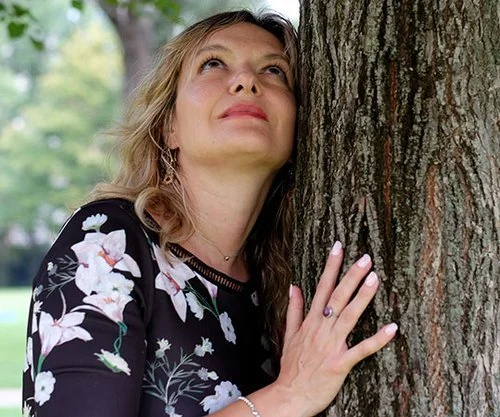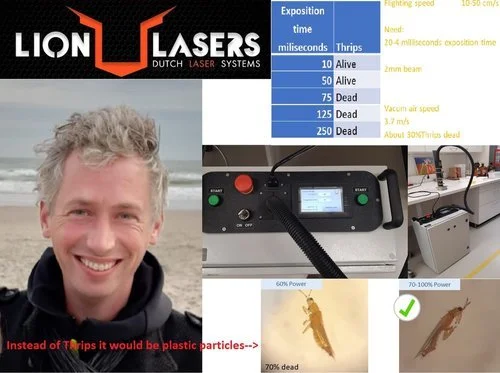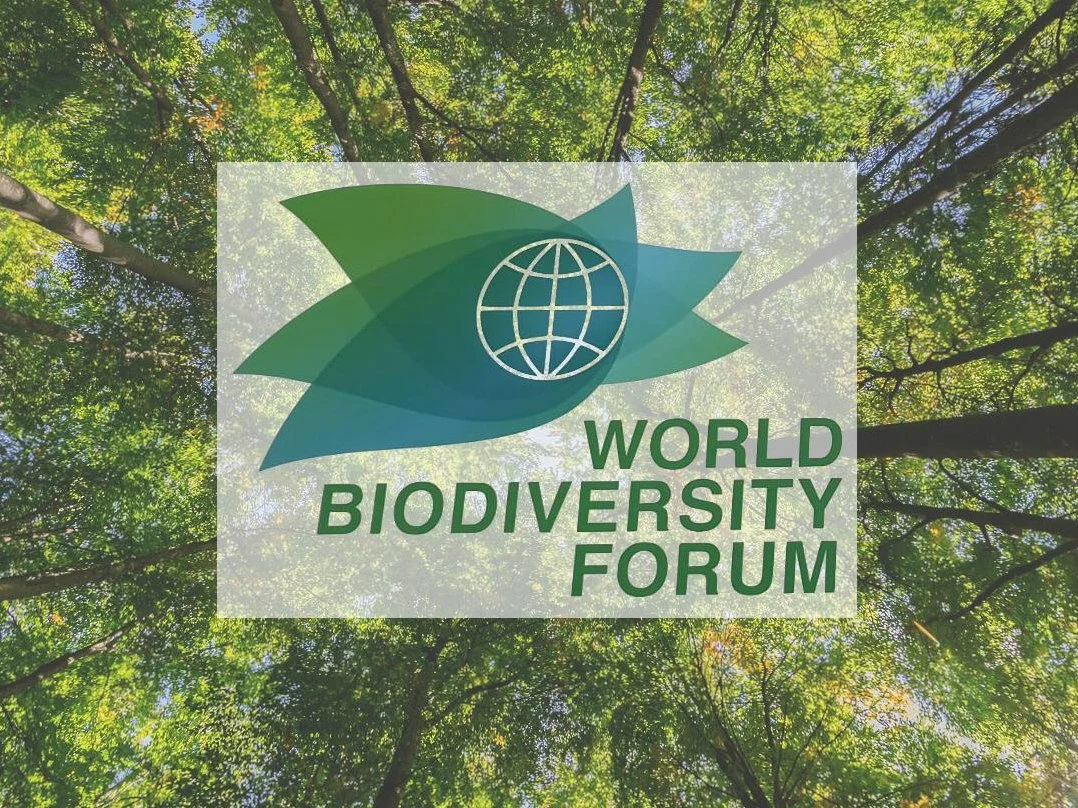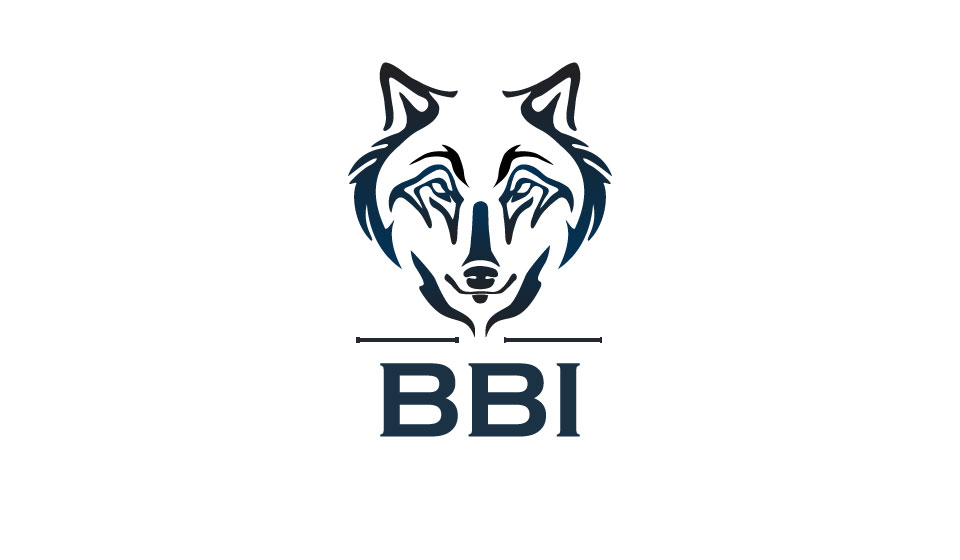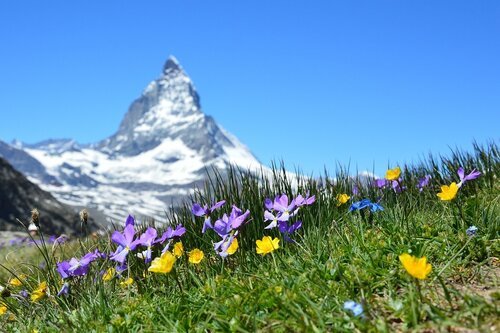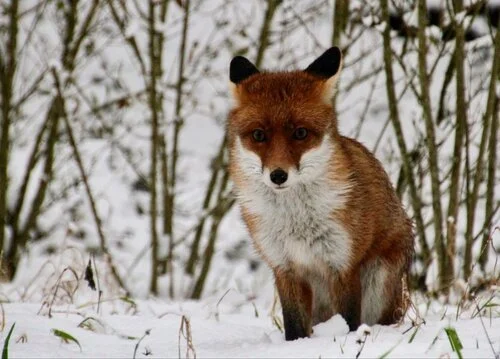
Projects
Projects & Initiatives
The Biomimicry Switzerland team is involved in a number of local and regional initiatives, both independently and in collaboration with other organizations. Our projects are designed to accelerate the education, development and practice of biomimicry in Switzerland and demonstrate the viability of applying biomimicry to unique challenges in our community. They also serve as catalysts to build the capacity of both Swiss and international communities to learn and practice biomimicry across various sectors of society and economy.
CURRENT PROJECTS
COLLABORATIONs
PAST PROJECTs
current projects
WEBINAR SERIES
Biomimicry is a powerful force for sustainable innovation. Biomimics study nature's most successful ideas over the past 3.5 million years, and adapt them for human use. The webinar series showcase concrete examples of how biomimicry thinking and disruptive innovations can help transform our communities, industries and societies.
Latest Webinars
Biomimicry and social innovation: Leadership tips from the African Savanna
With more than 10 years of experience in multinational companies as a manager, certified eco-somatic, executive coach and passionate Biomimic, Silvia will guide us through the concept and some applications of biomimicry for social innovation. She will share an accessible, exciting blend of information on mentors from the savanna and lessons that we can learn from them.
Silvia Mirandola, is a Biologist who attained a Ph.D. in Biomedical Sciences from the University of Padua. She has devoted 12 years of her life to Medical Research, collaborating with different Universities, and is the author of several scientific publications on viral Hepatitis. After a career in the Medical Affairs of Pharma companies, she expanded her interest in Transformative Leadership and Team-coaching Programs, designing and creating science-driven training, facilitation, and coaching services. She is an eco-somatic and executive Coach (ACC) certified by the ICF (International Coaching Federation), creator of WeBiomimic® for Team Effectiveness and author of, “Leadership Safari. Meet the experts in the African savanna”.
She is co-founder of Biomimicry for Business and believes nature is an endless source of learning, creativity and innovative solutions.
Lasers light the way: Chasing nature's nanostructures
The flamboyant colours of a peacock are fake. Have you ever seen a shark covered with algae or barnacles? How cool would it be if your car’s window has a penguin’s de-icing properties?
In this webinar, Ed will take us down the rabbit hole to nature’s tiniest bumps and ridges on a nanometer scale. At a billionth of a meter, is the scale where visible light behaves strangely and bacteria are pierced into shish kebabs. This is where lasers thrive with millions of individual light pulses lasting just a billionth of a second each. Welcome to Ed’s world, where invisible nanostructures have visible effects.
Edwin Kroon (Ed) - Little Ed was told animals don’t understand what he’s saying. Yet they seemed to listen to commands such as ‘Sit’ or ‘Come here’. Little Ed found that contradictory.
Less-Little Ed studied Animal Science at the Wageningen University and was told that hair and feathers are made from the same material but react differently to water. Less-Little Ed wanted to copy-paste the feathers’ water-repellent structure on his shower drain since it was always clogged with water-attracting long hair.
After 10 years of searching, Not-Little-Anymore Ed found the tool to replicate these surface structures: Lasers. For the past 5 years, that has been his tool to chase Nature’s nanostructures. Zoom Recording
Mycelium: Stepping into Successful Partnerships Inspired by Nature
With more than 10 years of experience in facilitating multi-stakeholder partnerships and as a biomimicry practitioner, Marina will guide us through the fundamentals of innovation through biomimicry and present how she used them to develop a tool to help facilitate partnerships and to create safe spaces for collaboration. She believes in nature as a mentor and playfulness as a catalyst for creativity.
Inspired by the mutualistic association between fungi and trees, Mycelium is a fun and inspirational game to allow creative conversations amongst stakeholders and to help them reflect on their own partnership journey. Playing Mycelium allows stakeholders to agree on principles, expected behaviours and actions for the partnership in a trusting atmosphere, quickly developing a common language for mutual understanding.
Marina Ruta is passionate about innovation and initiatives fostering environmental sustainability, Marina is currently Lead of the BiodiverCities by 2030 Initiative at the World Economic Forum.
Marina holds a PhD from the Doctoral School of Environmental Engineering at the Ecole Polytechnique Fédérale de Lausanne (EPFL) and an MBA with a specialization in International Organizations from the University of Geneva. She is a certified PMI project manager, biomimicry practitioner and yoga teacher. With both Italian and Swiss citizenship, she currently resides in Geneva. In her spare time, she can be found in nature, hiking and freediving. She constantly explores initiatives shaping the future of sustainable development, nature and human consciousness. Zoom Recording
SWISS Biomimicry MAPPING PROJECTs
The Swiss mapping project goal is to develop an interactive tool that identifies biomimicry research (e.g. university research, private lab), biomimicry startups and educational curriculum/programs throughout Switzerland.
Here is the link to Swiss Biomimicry Resources Map
If you are interested to add your company, research lab/center or educational to the Swiss map, please send us an email.
Biomimicry Switzerland, Alterre Bourgogne-Franche-Comté and the Centre d’Etudes et d’Expertises en Biomimétisme ( Ceebios ) explore together the potential applications of Biomimicry in the French area Bourgogne-Franche-Comté and in its surrounding areas.
Do you live in this region OR on the border of the French-speaking part of Switzerland?
Take a few moment to participate to this study which lists all practitioners engaged in this mission or who are interested in this bio-inspired approach.
Link to the survey : https://airtable.com/shrFJ12KXzbv1flmt
For more details: https://www.alterrebourgognefranchecomte.org/.../etud.../... #biomimetisme
ALPINES BIOMES PROJECT
collaborations
World Biodiversity Forum
The World Biodiversity Forum will bring together biodiversity scientists, scientists from disciplines relevant to the theme of the hybrid event with representatives from key sectors (agriculture, finance, health), as well as other societal actors, e.g. youth, to introduce case studies, tell us about success stories and highlighting synergies.
Born Global's mission is to connect innovative minds around the world and to educate each other through biomimicry menthodology
past projects
Finance & Investment
Biomimicry Business Intelligence
Successful biomimicry businesses now reflect nature’s successes in a variety of products from Velcro fasteners to fast vehicles. While the field is just emerging, in 15 years biomimicry could contribute $300B [in 2010 dollars] annual U.S. gross domestic product (Dr. L. Reaser, PLNU, 2010). Biomimicry Business Intelligence™ provides economic and financial research reports, in-depth market and product analysis for the financial community and government institutions. The first series of biomimicry business case studies and market trends reports are available at: Biomimicry Business Intelligence.
Applying nature’s models and principles to human problem solving consistently delivers elegant ways of achieving both economic and environmental goals. Nature’s successes – streamlined structures, highly efficient mechanisms, and zero-waste strategies that are sustainable in closed systems -- are transforming how we think about designing, producing, storing, transporting and distributing goods and services. Worldwide, biomimicry is gaining central consideration in ambitious projects including city planning and high-speed rail. To keep pace with population growth in the next 15 years, innovative jobs creation for 600 million people is urged by international analysts, and biomimicry is noted for its economic potential (2013 Development Reports by Kauffman Foundation, UN and World Bank). Venture capitalization of biomimicry businesses will secure this innovative sector’s global economic growth and profitability to investors.
Finance 3.8: A Biomimicry Design Challenge for Financial Architecture
Biomimicry can be applied to products, processes, or systems. We focus not only on emulating nature's genius in the design of investment products and processes, but also in the design of the financial system itself. How would nature design a financial system? The best answer we have to this question so far is: community credit (see "bio-credits" below). That said, biological design can inform financial architecture at all level from community credit to global finance policy. Researchers from the Bank of England and the University of Oxford, for example, designed recommendations linked here for the decentralisation of risk management strategies in banking regulation by studying the connections within food webs and how viruses spread through networks. Finance is a complex adaptive system, and the natural world is the ultimate authority on designing complex adaptive systems that are regenerative over the long term within the operating conditions of this planet. There is much to learn from living systems to help monetary and financial architects achieve the same qualities in our financial system that we so admire in natural systems. Biomimicry Switzerland is evolving the discussion of how to make our financial system function as if it were an organ of ecology.
Kingfishers
Bio-credits and the Biomimicry Exchange Network (BXN)
Introduction to Community Credit - Presentation by Jamie Brown-Hansen
We work with the Bio-credits Working Group of the Biomimicry Global Network (BGN), which is designing and implementing a long-term "self-funding" strategy for the global biomimicry community. The strategy is premised on gradually shifting the weight of our economic dependence out of bank credit and into community credit to the extent that we can over time. Community credit is the model of exchange that is most consistent with biological design principles, or the design of mature biological systems.
The video to the right provides an overview of community credit from a biomimicry perspective, an explanation of our long-term "self-funding" strategy, and a demonstration of the Biomimicry Exchange Network (BXN) (http://biomimicry.communityforge.net), our first prototype of a mutual credit facility for this community. Biomimicry Switzerland administers this facility on behalf of the global network.
Principles of Ethical Biomimicry Finance
Ethical Biomimicry Finance™ (EBF) is an investment methodology and due diligence framework for identifying biomimetic technologies and innovative companies that are accelerating the development and commercialization of biomimietic designs. Biomimicry Switzerland is an active EBF Advisory Board member and supports the development and adoption the EBF framework in Switzerland.
After decades of research by Hazel Henderson and Janine Benyus and deep collaboration between their two companies, Ethical Markets and Biomimicry 3.8 developed detailed criteria for identifying, working with and investing in companies that adhere to the Principles of Ethical Biomimicry Finance™. This is a turnkey guide for investors in vetting companies based on the biological truth that the human species is interdependent with all other life forms on Planet Earth. Life’s Principles, strategies universal to all organisms, should provide the basis for all production and exchange of goods, community structures and services. This includes the design of monetarysystems, investments, banking, financing, bartering, reciprocal exchange, payments, crowdfunding, compensation and unpaid gifting, sharing, cooperatives, provision of public goods, infrastructure, collective health, education and life-supporting services. Read the full public Statement on Transforming Finance Based on Ethics and Life’s Principles.
The Ethical Biomimicry Finance™ investment methodology is a trademarked brand, available on license to asset managers, investment companies and institutional investors worldwide. For more information, contact Rosalinda Sanquiche at office@ethicalmarkets.com.
Innovation & Commercialization
INTERRED (European Union Project)
Strengthen SMEs in the field of manufacturing through sustainable innovation based on biomimicry.
Together with Biomimicry peers in Netherland, Belgium, France, UK, and Germany we are applying for an EU fund to establish a permanent co-creative platform for knowledge exchange and collaboration among manufacturing SMEs, biomimicry experts and leaders in sustainable development across the whole north-west Europe region.
We are facing tremendous challenges when it comes to climate change and resource depletion. Recently, a framework of Sustainable Development Goals has been ratified to help businesses to become more sustainable. While many large corporations have innovation departments working on this topic, many SMEs struggle to leave unsustainable pathways and implement these SDGs. Biomimicry (innovation inspired by nature) is recognised as a leading framework and methodology for realising today’s aspirations for sustainable growth and innovation and help SMEs innovate in a sustainable way. These tools have been applied in a wide diversity of Fortune 500 companies and biomimicry thinking contributed to their business success. There is substantial untapped potential in biomimetic approaches to problem solving for manufacturing processes such as reduction of material use, decreasing waste and CO2, improving efficiency and collaboration with local and transnational partners, to name a few.
The resulting platform enables the realisation of sustainable innovations emerging from the intersection of biology, technology and society that put manufacturing SMEs in a stronger economic position within Europe.
Involved partners in the project:
Swiss Federal Institute of Technology in Lausanne (EPFL)
Biomimicry Switzerland is collaborating with Swiss Federal Institute of Technology in Lausanne. The ultimate goal of the partnership is to educate and inspire students and faculty to integrate biomimicry as a viable approach and methodology into design to create, develop and commercialize truly sustainability solutions.
Biomimicry@EPFL Fusebox Challenge
Fusebox is an interactive platform where students can propose ideas on a given topic. Biomimicry@EPFL used Fusebox to create an opportunity for student to address the challenge of food security in a design contest called “Biomimicry: Nature has the solution”. The contest consists in addressing a so far unsolved problem by getting inspiration from nature. The Fusebox challenge enhances students’ creativity and empower them to design sustainable and smart solutions whatever their field of studies. This process will help identify and select the best innovators to bring on board for the real contest the Biomimicry Design Challenge organized by the Biomimicry Institute in 2015,2016, 2017 and 2018.
Bioluminescence Project
In partnership with the Kovac Family, Biomimciry 3.8, Biomimicry NL, and Biomimicry Switzerland are seeking funds to begin the pre-study to explore and investigate nature’s well-adapted strategies to create lighting. The world’s first (and still best) fiber optics, photonic crystals, and LED Bragg refractors were invented by marine sponges, beetles, and tropical butterflies. For the hundreds of millions of years, life has been generating, amplifying, and transmitting light economically and efficiently. By learning from nature’s approaches to create illuminations, we can apply these strategies and develop more sustainable human approach to lighting.
The commercial and residential building sector accounts for 39% of carbon dioxide (CO2) emissions in the United States per year, more than any other sector. Most of these emissions come from the combustion of fossil fuels to provide heating, cooling and lighting, and to power appliances and electrical equipment. By transforming the built environment to be more energy-efficient and climate-friendly, the building sector can play a major role in reducing the threat of climate change.
Lighting is a significant energy user in residential, commercial and industrial building, but is also critical to occupant safety, comfort and productivity. Researchers are constantly working to develop lighting products that produce better light, using less energy. Lighting accounts for approximately20 percent of all electricity used in the United States and up to 40 percent of electricity used in commercial facilities.
In the pre-study we will make use of Biomimicry Thinking (framework to apply biomimicry in the design) and the Biomimicry Innovation Process which includes 4 main steps in the design process: scoping, discovering, creating, and evaluating. Following the specific steps within each phase helps ensure the successful integration of life’s strategies into human designs. In each of the steps we consciously integrate Biology into our Design; which makes it different from any other design or innovation process.
European Biomimicry Alliance
The European Biomimicry Alliance (EBA) is a consortium of regional biomimicry practitioners in Europe. One of the goals of the alliance is to foster collaboration between national alliances of biomimicry practitioners and facilitate co-created and common initiatives that advance the adoption of biomimicry in Europe. Biomimicry Switzerland is a co-founder of the EBA and represents Switzerland in the Alliance. The first collaborative EBA project was a Sept. 2014 Biomimicry Workshop in Lisbon, in which BSwiss participated
Policy And Advocacy
International Standards Organization (ISO)
Technical Committee 266 Biomimetics
Biomimicry Switzerland plays an active role in the Technical Committee 266 Biomimetics development process in partnership with Schweizerische Normen-Vereinigung (SNV). A BSwiss representative attended the last general assembly meetings in Liege, Belgium.Biomimciry Switzerland is working a create a Swiss mirror committee by engaging variety of national stakeholders. Once the mirrow committee has been created, Switzerland will be an active participant in the TC 266 Biomimetics proceedings:
There are four Technical Committee 266 Biomimetics Working groups:
Working Group 1: Terminology and methodology
Working Group 2: Structures and materials.
Working Group 3: Biomimetic Optimization
Working Group 4: Knowledge Infrastructure of Biomimetics
In 2017 Patrick Baumann, Managing Partner translated ISO 18457: 2016 Biomimetics - Biomimetic Materials, Structures and Components from English to German.
The next annual meeting is scheduled in October 4 2017, in Berlin Germany
Global Ecovillage Network
Biomimicry Switzerland is proud to support the Global Ecovillage Network in its approach to bottom-up, locally adapted, decentralised community innovation and especially on communicating the relevance of ecovillage design to our evolutionary process as a 200,000 year-old biological species. Broadly speaking, ecovillages are the model of social organisation most closely reflecting Life's Principles, or the universal organising principles of natural system design. The Global Ecovillage Network provides a nature-inspired, life-friendly way through our current evolutionary knothole, mimicking strategies that have thrived on Earth for 3.8 billion years. Biomimicry Switzerland participates in the Green Phoenix international ecovillage design process, which takes place at the Schweibenalp Centre for Unity every autumn.
Biomimicry Teaching Materials Translations
In partnership with Biomimicry Columbia and Biomimicry Yucatan, Biomimicry Switzerland works on the development of a framework to facilitate the translation of existing biomimicry teaching materials (e.g. the Biomimicry Resources Handbook, and exercises) in a number of foreign languages. Initially, the teaching material will be translated into French, and our long-term goal is to expand this methodology to other languages including German, Portuguese and Spanish. The team is in discussion with the Biomimicry 3.8 Group on how to implement this initiative effectively.
Latest Completed Translation Projects:
Biomimicry DesignLense - Visual Guide:
Additional languages:
German (translation completed Biomimicry Germany)
Dutch (translation complete Biomimicry Netherlands)
Biomimicry Webinar Series
Series Description
This three-part webinar series dives into all you need to know about the basics of biomimicry, how integrate biology into design and ecosystem interconnection and resiliency:
The Essential of Biomimicry - Thursday May 28th, 2020
Learn how to apply biomimicry thinking to solve human challenges. Participants will jump right into practicing the steps of integrating biology into design using real human challenges. Through interactive dialogue and hands-on learning activities, the foundation of biomimicry will become familiar and tangible tools to employ in one’s work. This webinar provides an introduction to biomimicry, a new discipline that emulates nature’s best models in order to solve human design challenges.
Design for Life How to Apply Life's Principles to your Product, Process or Solutions - Thursday June 11th, 2020
Animals, plants, and microbes are the consummate engineers. They have found what works, what is appropriate, and most importantly, what lasts here on Earth. Life has evolved a set of strategies that have sustained over 3.8 billion years. Life’s Principles represent these overarching patterns found amongst the species surviving and thriving on Earth. In this webinar, the participant will learn about the biomimicry life’s principles and how to incorporate in your design.
What Nature Teaches Us About Resilient Society - Thursday June 25th, 2020
Effort to build community resilience often focus on growing the capacity to “bounce back” from disruptions, like those caused by climate change. Resilience is the ability of a system (like a community) to absorb disturbance and still retain basic function and structure. Learning from natural systems on how to building regenerative and resilient communities.
European Biomimicry Design Challenge
Actively support the creation and development of the European Biomimicry Design Challenge (EBDC) in collaboration with regional biomimicry organizations. This European initiative is led by COBIOM.
The first cohort of the EBDC is scheduled to be launched the first quarter of 2021.
PAST NEWSLETTERS
2020 SUMMER NEWSLETTER
Announcements
1. New members of the Leadership Team
2. Featured Product Design from EPFL, Lausanne
3. The Biomimicry Swiss Mapping Initiative
4. Winners of the $100,000 Ray of Hope Prize in 2020
5. Digital Biomimicry
2020 SPRING NEWSLETTER
Biomimicry Webinar Series
Learn about
Biomimicry Thinking & Resilience :
Let Nature be our guide
When a miniscule virus takes down the entire edifice of global society and economy, humanity's limitations become abundantly clear. Let's take advantage of the COVID "time out" to reach out to an intelligence that is far older and more regenerative than ours: the 3.8 billion year-old biological body of Life. Join us in this free webinar series to learn and discuss how Nature's design intelligence can guide our communities, businesses and organizations. Read More & Past Issues
2019 SUMMER NEWSLETTER
Announcements
1. New members of the Leadership Team
2. Innovation Atelier in Geneva, Biomimicry in Social Innovation
3. Botanic Garden in Lausanne, Biomimicry workshop for the Festival of Nature
4. Winners of the $100,000 Ray of Hope Prize from the Biomimicry Launchpad program
Featured Product Design
5. ETH, Zurich. Pine cones inspire adaptive shading system
Upcoming Events
6. Biomimicry Academy - July 1 or July 11, 2019 to March 31, 2020
Announcements
1. 2018 - Ray Hope Prize Winner
2. Invitation to the Global Design Challenge
3. Biomimicry Launchpad
Featured Product Design
4. Clayola - Biomimetic Home Irrigation System
Upcoming Events
5. Biomimicry for Social Innovation: June 10-16, 2019 in Slovenia
FEBRUARY 2017 NEWSLETTER: CELEBRATING LIFE'S BIRTHDAY
IN THIS ISSUE:
NEW Projects
1. Biomimicry Business Intelligence - Launching of a Biomimciry Advisory Service for financial and market research and advisory
2. Biomimicry Global Design Challenge 2017 - Launched at the end of 2016 with a Climate Change theme
UPCOMING Events
1. Salon des Technologies et de l'Innovation de Lausanne (STIL), 2nd March 2017, Lausanne - a series of stands and presentations on biomimicry coupled with a Photo Exhibition to show off EPFL's and Swiss biomimicry technologies
2. Geneva Global Goal Innovation Day, 24th March 2017, Geneva - meet us at a Workshop on Biomimicry for Waste Management
3. European Biomimicry Alliance Gathering, 1st and 2nd April 2017, Italy
2016 WINTER NEWSLETTER
IN THIS ISSUE
Join us at one of our upcoming workshops in Geneva and/or Zürich for an inspiring dive into the genius of the natural world:
1. Feb. 12, Geneva: Deep Patterns In Nature's Technologies @ LIFT
2. Apr. 1-2, Zürich: Hacking Biology @ Thought for Food

